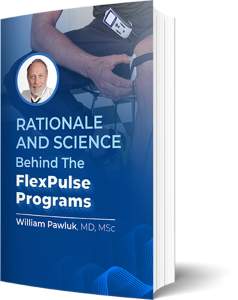Pulsed electromagnetic field (PEMF) therapy can be beneficial in treating eye diseases such as glaucoma, cataract, “floaters”, and macular degeneration. It can also help de-stress the eyes. PEMF therapy can make a big difference in overall eye health and vision in relation to age-related and stress-related eye problems, as well as eye strain, a huge issue in the age of excessive time spent staring at screens.
Eyes are quite responsive to PEMFs due to the way the tissues of the eyes are arranged. Eye tissues typically heal rapidly, and PEMF therapy for eyes can safely speed the healing process. No adverse reactions in the eyes have been reported, even from very high intensity PEMFs used on or near the head.
Eye problems are quite common. In fact, the National Eye Institute’s study on the prevalence of adult vision impairment and age-related eye diseases show that more than 35 million Americans over 40 suffer from one of four major types of eye problems: age-related macular degeneration, cataract, diabetic retinopathy, or glaucoma. Research has shown that PEMF therapy can have a positive impact on these conditions, and many other eye-related issues.
Eye problems can be difficult to treat, and many treatments have inherent risks as well as temporary effectiveness. They can also be expensive, as a study from the Glaucoma Research Foundation (GRF) shows. While laser surgery can be a way to treat glaucoma, the effect is not permanent and the surgery still needs to be combined with expensive glaucoma medications that have many side effects
Alternatively, PEMF therapy can be a way to restore vision or treat vision loss due to a variety of eye problems. Because treatment for eye conditions may need to be ongoing, PEMFs are a convenient option since they can be used at home.

Effectiveness of PEMF therapy for glaucoma and cataracts
Glaucoma
PEMF therapy can be used to aid in recovery of optic nerve disorders and glaucoma. Glaucoma can cause a visual field defect that can cause blindness. PEMFs improve blood circulation1 and microcirculation2, which have neuro-regenerative effects and help keep eyes healthy. Improved blood circulation provides increased tissue oxygenation, which is the energy-carrying capacity of the blood. This is integral to keeping cells young.
A 19903 study of those suffering with glaucoma found that just ten sessions of 10-minutes each of PEMF therapy increased blood flow in the eyes, which is beneficial and effective in treating glaucoma.
Another study from 19964, showed that applying PEMF therapy for glaucoma for ten minutes over ten sessions decreased the visual field deficit by at least 10% in 72% of treated eyes, and improved vision acuity. These results were stable even at the four to five month follow up. This treatment had an additional benefit of reducing the size of cataracts that may also have been present.
A more recent study5 found regression in symptoms and improvement of vision with glaucoma. Another study found PEMFs comparatively more effective than conventional approaches that use tablets for vasoactive effects.
Cataracts
Although little research has been conducted specifically around the impact of PEMFs on cataracts, the underlying cause of cataracts developing have been shown to be impacted by PEMF therapy. It’s reasonable to assume that PEMFs could reduce oxidative stress on the lens and eye, reduce the layering of fibers that make the lens more dense, improve the amount of natural fats present, and improve circulation to the tissues. All of these effects reduce the risk of developing cataracts, especially when applied early in the progression.
PEMFs have also been shown to help speed recovery and reduce risk of complications from surgery, including surgery for cataracts. One study6 in patients with edema (swelling) reactions after cataract surgery found that PEMFs combined with laser therapy equaled faster recovery and less postoperative complications compared to control groups.
The impact of PEMF therapy for macular degeneration and ocular disorders
Macular Degeneration
Eye disorders often develop as people age. Macular degeneration is one such condition that can be improved by PEMF therapy.
In one study7, macular degeneration was treated with a PEMF system in 283 eyes. This treatment positively impacted the pathologic process in the eye and this result remained even after treatment was finished. Visual acuity was improved in 46% of eyes. Results were followed for six years in 72 eyes, and confirmed the effectiveness of the treatment. However, long term observations indicate there is a need to repeat treatment every three to five months to prevent the disease from progressing.
Optic nerve damage
Optic nerve atrophy, or optic nerve damage can result from hereditary genetic disorders, trauma (including stroke), tumor, decrease in oxygen or blood supply, and infections. In 1990, a preliminary study8 using low-frequency electromagnetic therapy in cases of optic nerve atrophy found a vision improvement of 0.2+ diopters (the unit used to measure the correction your eye requires) in 90% of those studied.
Several ocular disorders are due to diabetes, including glaucoma and retinopathy. PEMF therapy has been shown to naturally reduce the negative impacts of diabetes including related vision loss.
With regular application of pulsed magnetic fields by using a device to deliver PEMF to the eyes, natural degeneration of eyesight due to age slows. PEMFs have anti-aging benefits related to cellular and tissue repair. Therefore, this therapy can provide preventive care to your eyes even if no problems are present.
Effectiveness of PEMF therapy for eyes in sports performance
A unique benefit of PEMF therapy to the eyes could be exciting for competitive athletes. Magnetic stimulation also reduces reaction time. Visual afterimages can last for microseconds, interfering with rapidly incoming new images. In the competitive setting, microseconds can affect reaction time and performance, and even be the difference between winning and losing.
A recent experiment9, published in The Journal of Cognitive Neuroscience, found that magnetic stimulation applied to the brain’s visual cortex improved fading of visual afterimages.
Electrical stimulation or PEMF therapy for prevention or reversal of eye problems?
Electrical stimulation has been studied and used as a therapy more often since it is a much older technology. It’s often the go-to for maintaining good eye health. However, since it’s advent, PEMF therapy has consistently proven to have superior effects.
Electric fields are met with strong tissue resistance; pulsed electromagnetic field therapy has none. It penetrates deeper into the tissues in the body, stimulating cell repair. PEMFs affect a wider area with less intensity and no discomfort. Recovery is more natural due to the use of less power, and improves oxygenation, regeneration and tissue energy production, promoting more natural recovery.
Investing in a PEMF system is more cost effective and convenient than specialists and the multiple follow-up visits required with electrical stimulation.
The Value of FlexPulse PEMF therapy for eyes
Regular low intensity PEMF therapy can have gentle regenerative effects and provide preventative effects. Higher intensities provide faster acting results.
The FlexPulse is an affordable, powerful, wearable PEMF system perfect for treating the eyes. The Flexpulse has a peak intensity of 200 Gauss and six preset programs ranging in frequency from 3 Hz to 1000 Hs.
FlexPulse has a 30 -day satisfaction guarantee and a 2-year International warranty, making it a no-risk, safe eye treatment alternative. Daily use of the FlexPulse can ward off age related eye problems, and provide a wide range of secondary benefits. With FlexPulse, you can relieve eye stress, and at the same time destress and detoxify your entire body!
PEMF therapy for Eyes Research citations
1. Rikk J, Finn K, Liziczai I, Radák Z, Bori Z, Ihász F. Influence of pulsing electromagnetic field therapy on resting blood pressure in aging adults. Electromagn Biol Med. 2013;32(2):165-172. https://www.ncbi.nlm.nih.gov/pubmed/23675619.
2. Abramovich S, Fedotchenko A, Koriakina A, Pogodin K, Smirnov S. [The characteristics of the geroprotective action of magnetotherapy in elderly patients with combined cardiovascular pathology]. Vopr Kurortol Fizioter Lech Fiz Kult. 1999;(5):7-9. https://www.ncbi.nlm.nih.gov/pubmed/10598519.
3. Tsisel’skiĭ I, Kashintseva L, Skrinnik A. [The effect of a pulsed electromagnetic field on the hemodynamics of eyes with glaucoma]. Oftalmol Zh. 1990;(3):154-157. https://www.ncbi.nlm.nih.gov/pubmed/2255478.
4. Bisvas S, Listopadova N. [Possibilities of magnetotherapy in stabilization of visual function in patients with glaucoma]. Vestn Oftalmol. 1996;112(1):6-8. https://www.ncbi.nlm.nih.gov/pubmed/8659077.
5. Veselova E, Kamenskikh T, Raĭgorodkiĭ I, Kolbenev I, Myshkina E. [Magnetotherapy designed to affect cervical sympathetic ganglia for the treatment of patients with primary open-angle glaucoma]. Vopr Kurortol Fizioter Lech Fiz Kult. 2010;(5):21-24. https://www.ncbi.nlm.nih.gov/pubmed/21328900.
6. Maksimov VIu, Zakharova NV, Maksimova IS, et al. Laser magnetotherapy after cataract extraction with implantation of intraocular lens. Vestn Oftalmol. 2002 May-Jun;118(3):15-7.
7. Skrinnik AV and Kovalchuk AS. The impulse electromagnetic field in the treatment of dystrophic lesions of the retina. Oftalmol Zh(8):459-462, 1989.
8. Zobina L, Orlovskaia L, Sokov S, Sabaeva G, Kondé L, Iakovlev A. [Effectiveness of magnetotherapy in optic nerve atrophy. A preliminary study]. Vestn Oftalmol. 1990;106(5):54-57. https://www.ncbi.nlm.nih.gov/pubmed/2264232.
9. Erkelens I, Bobier W, Macmillan A, et al. A differential role for the posterior cerebellum in the adaptive control of convergence eye movements. Brain Stimul. July 2019. https://www.ncbi.nlm.nih.gov/pubmed/31427273.

